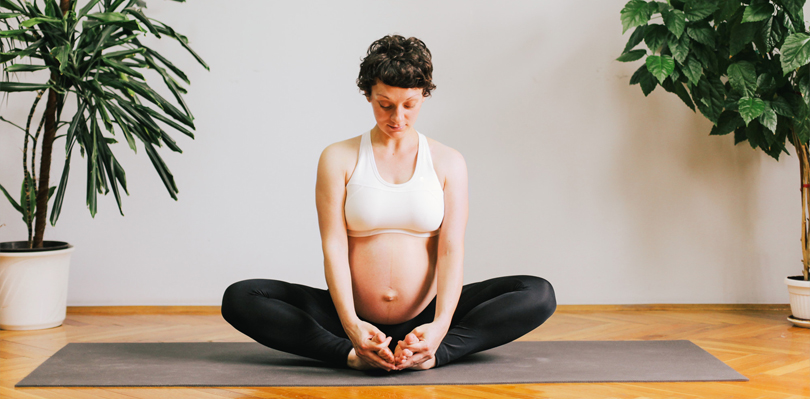Pregnancy is a transformative journey, both physically and emotionally. Expectant mothers need to stay active and engage in tailored pregnancy workouts throughout each trimester to contribute to their overall well-being. However, it’s crucial to recognize that the needs of a pregnant body change as the pregnancy progresses.
This guide provides a comprehensive and safe exercise routine for every trimester, ensuring that mothers-to-be can maintain their fitness, strengthen their bodies, and prepare for childbirth in a gentle and nurturing manner. It will help expecting mothers understand how to adapt their workout routines to suit their changing bodies and ensure a healthy pregnancy.
Benefits Of Pregnancy Workouts
Engaging in regular pregnancy workouts offers a multitude of benefits for expectant mothers. Here are some key benefits of pregnancy workouts:
- Improved physical fitness
- Enhanced muscle tone
- Preparation for labor
- Faster postpartum recovery
- Healthy weight management
- Stress relief
- Better posture and balance
- Reduce back pain
- Increased energy levels
Safety Tips For Pregnancy Workouts
Ensuring the safety of both the expectant mother and the baby is of utmost importance during pregnancy workouts. To help you exercise safely, here are some essential tips to consider:
1. Always consult with your healthcare provider before starting any exercise routine during pregnancy. They can provide personalized recommendations based on your health condition and gestational stage.
2. Opt for low-impact exercises such as walking, swimming, prenatal yoga, and stationary cycling. These activities are gentle on joints and reduce the risk of injury.
3. Begin each workout session with a gentle warm-up to increase blood flow to your muscles and prepare your body for exercise. Similarly, end with a cool down to help your heart rate return to normal gradually and reduce muscle soreness.
4. Pay attention to how your body feels during exercise. If you experience pain, dizziness, or shortness of breath, stop exercising immediately and rest. Never push yourself too hard.
5. Drink plenty of water before, during, and after your workout to stay well-hydrated. Dehydration can lead to overheating and poses risks to both you and your baby.
6. If you’re using weights or resistance bands, ensure that you’re using the proper form to prevent strain or injury. Consider working with a certified prenatal fitness trainer to learn the correct techniques.
7. As your pregnancy progresses, certain exercises may become uncomfortable or unsafe. Modify exercises as necessary. For example, switch to incline push-ups instead of traditional push-ups to reduce pressure on your abdomen.
Workouts For The First Trimester

It is crucial to engage in gentle, low-impact, and safe exercises during the first trimester of pregnancy. Below is a list of pregnancy workouts suitable for the first trimester:
1. Walking: Walking is an excellent low-impact exercise that you can easily incorporate into your daily routine. It helps improve your cardiovascular health without putting too much stress on your joints.
2. Prenatal Yoga: Prenatal yoga is a gentle exercise that focuses on stretching, breathing exercises, and relaxation techniques. It promotes flexibility, balance, and mental well-being, making it an excellent choice for the first trimester.
3. Swimming: Swimming is a full-body workout that is low-impact and supports your body weight, reducing pressure on your joints. It is particularly beneficial for relieving back pain and swelling.
4. Pilates: Prenatal Pilates exercises can strengthen your core muscles, improve posture, and enhance overall body strength. Ensure that you attend prenatal Pilates classes or follow videos specifically designed for pregnant women.
5. Stationary Cycling: Using a stationary bike provides a safe cardiovascular workout without the risk of falling. Adjust the resistance to your comfort level and maintain a steady pace.
6. Light Strength Training: Incorporate bodyweight exercises such as squats, lunges, and modified push-ups to maintain muscle tone. Use proper form and avoid heavy weights to prevent strain.
7. Pelvic Floor Exercises (Kegels): Kegel exercises strengthen the pelvic floor muscles, which support the uterus, bladder, and bowels. These exercises can help prevent urinary incontinence and prepare for childbirth.
8. Breathing Exercises: Practice deep breathing exercises to relax and reduce stress. Proper breathing techniques can be beneficial during labor and delivery.
Workouts For The Second Trimester
During the second trimester of pregnancy, many women may feel their energy levels increase, and some of the early pregnancy discomforts may be alleviated. It is an excellent time to engage in a variety of exercises that promote strength, flexibility, and relaxation. Here are some safe and effective pregnancy workouts for the second trimester:
1. Strength Training With Light Weights: Incorporate light dumbbells or resistance bands into your routine. Perform exercises like bicep curls, shoulder presses, and leg lifts with proper form and controlled movements.
2. Low-Impact Aerobics: Low-impact aerobic workouts designed for pregnant women can help improve cardiovascular endurance. Follow along with prenatal aerobic exercise videos.
3. Gentle Stretching: Incorporate gentle stretching exercises to improve flexibility and reduce muscle tension. Focus on your major muscle groups and hold each stretch for 15-30 seconds.
4. Kettlebell Exercises: Use light kettlebells for exercises like kettlebell squats and kettlebell swings. Ensure proper form and start with a lightweight to avoid strain.
5. Modified Planks: Perform modified planks by resting your upper body on an elevated surface like a bench or countertop. This variation helps engage your core without putting excessive pressure on your abdomen.
6. Swiss Ball Exercises: Utilize a Swiss ball (exercise ball) for exercises like pelvic tilts, squats, and gentle back stretches. The ball provides support and allows for a wide range of motion.
7. Body Balance Exercises: Practice exercises that improve balance, such as single-leg stands or standing on a balance disc. Balance exercises enhance stability, which is crucial as your body changes during pregnancy.
8. Prenatal Barre Workouts: Prenatal barre workouts combine elements of ballet, Pilates, and yoga. These workouts focus on small, isometric movements to tone muscles and improve flexibility.
Workouts For The Third Trimester
During the third trimester of pregnancy, it’s important to focus on exercises that are gentle, safe, and help prepare your body for childbirth. Here are some workouts that are suitable for this phase:
1. Walking: Walking is a low-impact exercise that you can continue throughout the third trimester. It’s a great way to stay active and maintain cardiovascular health.
2. Relaxation Exercises: Practicing deep breathing exercises and relaxation techniques can help calm your mind and prepare for labor. Learning proper breathing can be valuable during childbirth.
3. Kegel Exercises: It’s recommended to continue doing Kegel exercises to strengthen your pelvic floor muscles. Strong pelvic floor muscles can aid in childbirth and postpartum recovery.
4. Seated Exercises: Performing seated exercises, especially those that focus on your core and pelvic muscles, can be effective. You can use a stability ball or a sturdy chair for support.
5. Wall Sits: Wall sits are a great way to strengthen your leg muscles. Lean your back against a wall and lower your body into a sitting position as if you were sitting in a chair.
6. Cat-Cow Stretch: This yoga stretch helps improve flexibility in your spine and pelvis. Get on your hands and knees, arch your back up like a cat, and then lower your back down like a cow.
By incorporating these exercises into your routine, you can help prepare your body for childbirth while staying safe and healthy during the third trimester.
FAQs
Can I start exercising during pregnancy?
Yes, but consult your healthcare provider first. Begin with gentle activities like walking or prenatal yoga. Starting with gentle activities like walking or prenatal yoga can be a good way to begin.
Are there exercises to avoid?
High-impact sports, activities with a risk of falling, and lying flat on your back after the first trimester should be avoided. Always stop if you feel pain or discomfort.
How often should I exercise?
Aim for 150 minutes of moderate-intensity aerobic activity weekly, spread across 30-minute sessions, 5 days a week. Include strength training 2-3 times a week, but consult your healthcare provider for personalized guidance.

